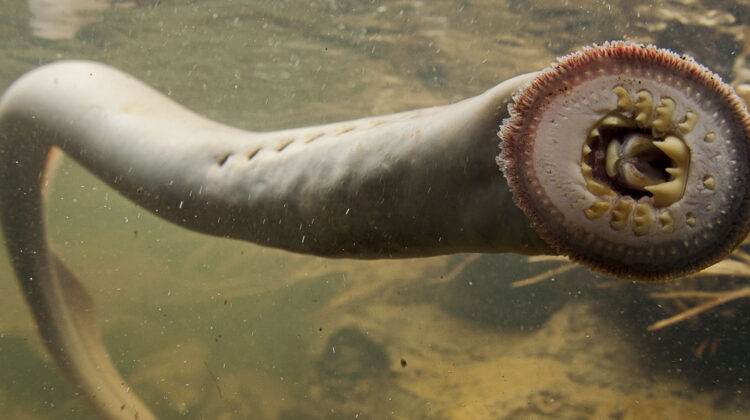
The sea lamprey, an ancient Atlantic fish that wreaked havoc on the Great Lakes, could be America’s first invasive species.
The sea lamprey, a parasitic fish native to the northern and western Atlantic Ocean, is one of the most primitive of all vertebrate species. Lampreys are sometimes incorrectly referred to as “lamprey eels” due to their similar body shapes.
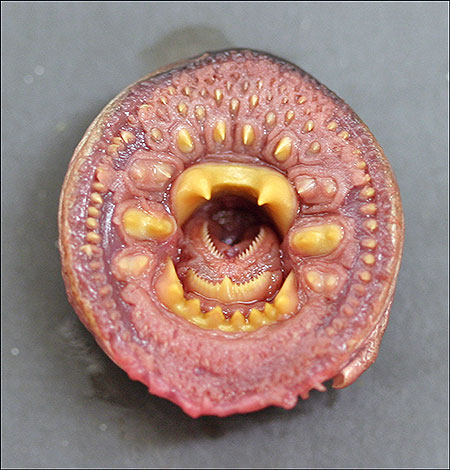
Lampreys, unlike “bony” fish such as trout, cod, and herring, lack scales, fins, and gill covers. Their skeletons, like sharks’, are made of cartilage. They breathe through seven pairs of tiny gill openings located behind their mouths and eyes.

The sea lamprey’s disc-shaped, suction-cup mouth, ringed with sharp, horny teeth, with which it latches on to an unfortunate fish, is the anatomical trait that makes it an efficient killer of lake trout and other bony fishes. The lamprey then rasps away the flesh of the fish with its rough tongue, allowing it to feed on its host’s blood and bodily fluids. Every year, one lamprey consumes approximately 40 pounds of fish.
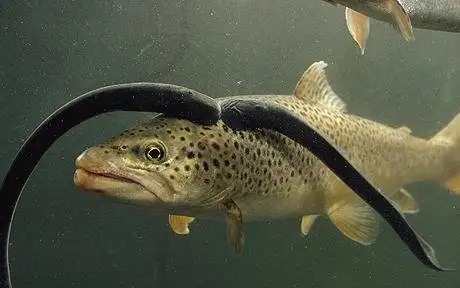
In the 1830s, sea lampreys invaded the Great Lakes via the Welland Canal, which connects Lakes Ontario and Erie and is an important part of the St. Lawrence Seaway. Within a decade, they had gained access to all five Great Lakes, where they quickly began predating on commercially important fish species such as trout, whitefish, perch, and sturgeon. The trout fishery had collapsed within a century, owing largely to the lamprey’s unchecked proliferation.
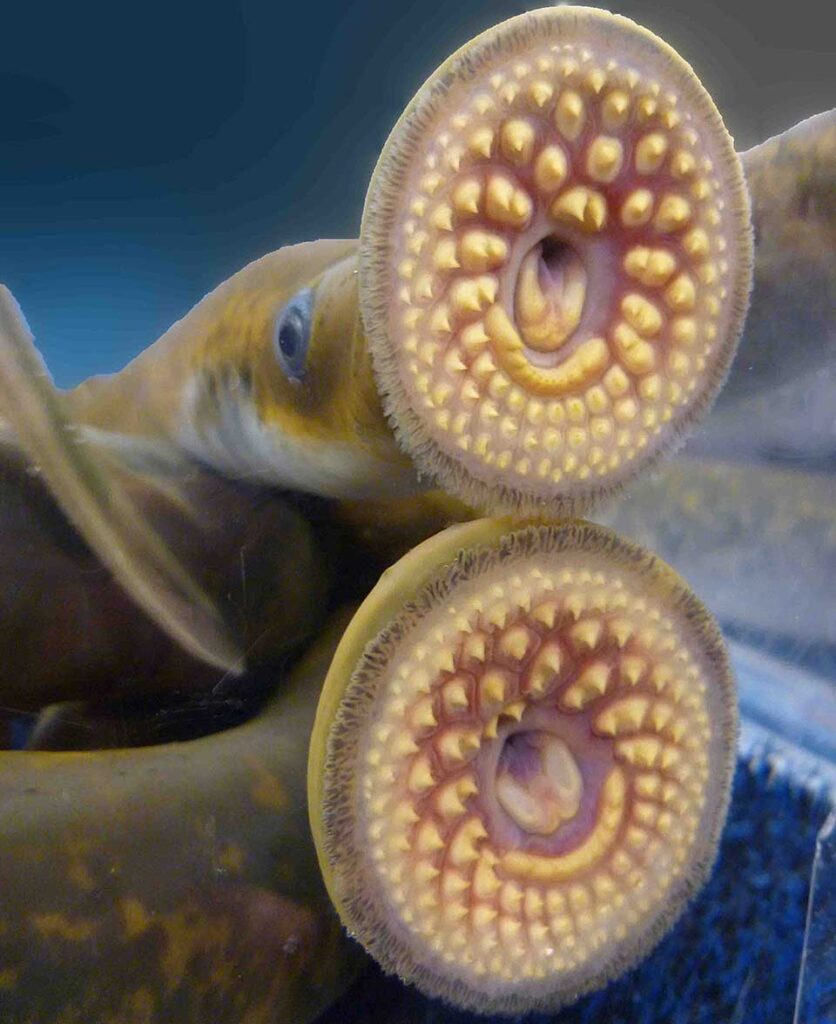
The Great Lakes Fishery Commission now coordinates sea lamprey control in the lakes, which is carried out by the US Fish and Wildlife Service and Fisheries and Oceans Canada. Field biologists install barriers and traps in the streams that feed the lakes to prevent lamprey larvae from migrating upstream, and they use lampricides, which target lamprey larvae but are harmless to other aquatic creatures.
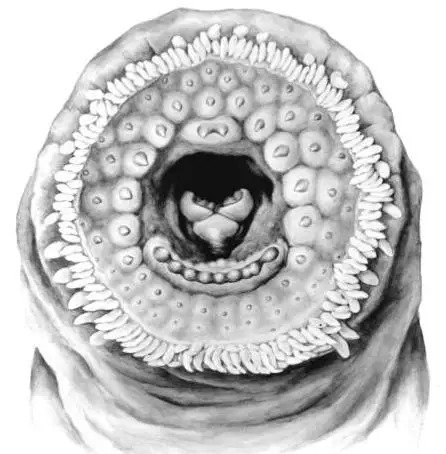
New methods for controlling sea lampreys are constantly being developed. Because sea lampreys communicate using odors, or pheromones, scientists have replicated these odors to improve the efficacy of current control methods.

Leave a Reply